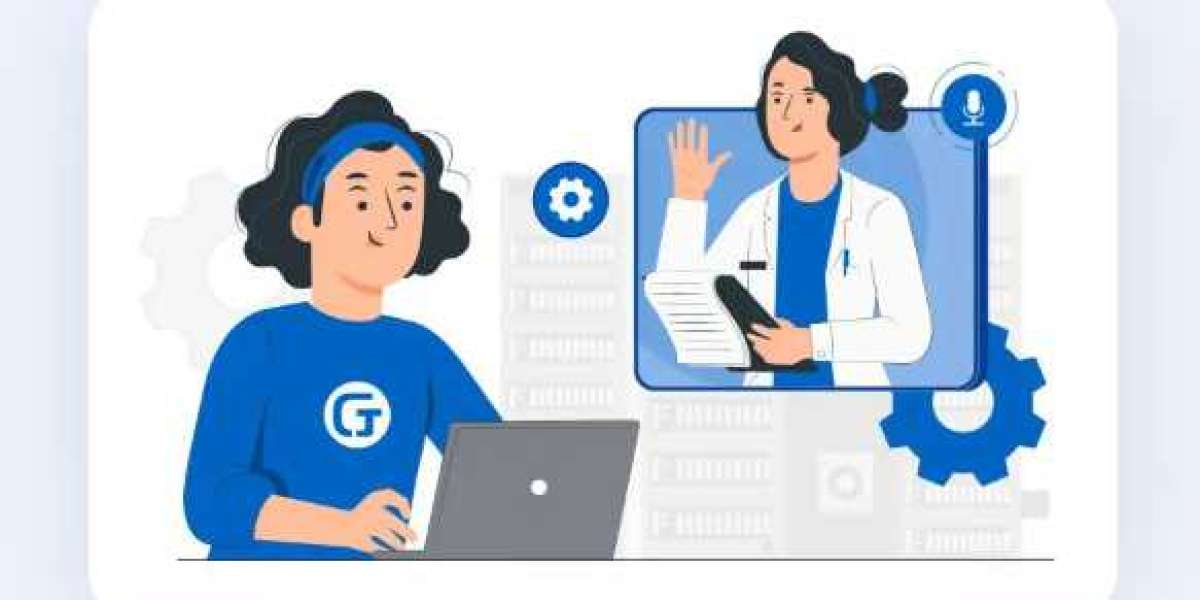In today’s fast-paced world, convenience is paramount. People are increasingly looking for ways to get healthcare services without the need for time-consuming in-person visits. This shift in consumer expectations has led to the rise of doctor on demand apps—platforms that allow users to consult medical professionals from the comfort of their homes.
Building a scalable and secure doctor on demand app requires careful planning, a deep understanding of mobile and web development, and an emphasis on user security and compliance with healthcare regulations. In this developer's guide, we will explore the key considerations and steps to creating a successful doctor on demand app.
1. Understanding the Market and Defining Your App's Purpose
Before diving into the technical aspects, it's crucial to understand the problem your app is solving and define the app's core purpose. The primary goal of a doctor on demand app is to offer users the ability to receive medical consultations remotely. However, the features and services you provide can vary based on the target audience and market needs.
Market Research
Conducting thorough market research is vital for understanding user pain points and determining the types of healthcare services that are most in demand. This research can help you identify:
- Target Users: Are you targeting general consumers or specific groups (e.g., elderly, chronic patients, mental health)?
- Healthcare Services: Do you want to focus on general consultations, mental health therapy, prescriptions, or emergency care?
- Competitors: Analyzing existing apps can help you identify gaps in their offerings and create unique value propositions.
Defining the Core Features
The core features of a doctor on demand app can vary, but typically include:
- User Registration: Secure sign-up using email or social media.
- Profile Management: Users can create and manage their profiles.
- Doctor Profiles: Detailed doctor profiles, including qualifications, specialties, and availability.
- Appointment Scheduling: A feature for booking consultations based on doctor availability.
- Real-Time Video Consultations: Secure video calls between patients and doctors.
- Prescription Management: Digital prescriptions and medication management.
- Payment Gateway: Integration with secure payment systems for transactions.
- Ratings and Reviews: Patient feedback on doctor consultations.
Once you have a clear understanding of the features that will set your app apart, you can begin designing its architecture.
2. Choosing the Right Technology Stack
A scalable doctor on demand app needs a technology stack that supports high performance, security, and future growth. Let’s explore the key components:
Frontend Development
The frontend of your app is what users interact with. This includes the user interface (UI) and user experience (UX) design, which should be intuitive, clean, and responsive. Key tools and technologies for frontend development include:
- Mobile Platforms: Decide whether you want to build a native app for iOS and Android, or opt for a cross-platform framework like React Native or Flutter.
- Frameworks: For web-based solutions, popular frameworks include React.js, Vue.js, and Angular for building dynamic user interfaces.
- UI/UX Tools: Design tools such as Figma, Sketch, or Adobe XD can help you create intuitive and visually appealing designs.
Backend Development
The backend of the app handles user data, appointments, video streaming, payments, and more. Choosing the right backend technology is critical for performance and scalability:
- Programming Languages: Consider using Node.js, Python (Django or Flask), or Ruby on Rails for backend development.
- Databases: Relational databases like PostgreSQL or MySQL are great for structured data. For high scalability, NoSQL databases like MongoDB might be considered.
- Server Infrastructure: You can choose AWS, Google Cloud, or Microsoft Azure for scalable cloud hosting services.
- Video Conferencing API: Integrate with services like Twilio, Zoom SDK, or Agora for high-quality video consultations.
API Integration
Your app may need to integrate with external services like electronic health records (EHR), appointment management systems, and payment gateways. Popular payment APIs include Stripe or PayPal.
3. Security: A Top Priority
Given the sensitive nature of healthcare data, building a secure doctor on demand app is non-negotiable. Here are the key security considerations:
Data Encryption
Medical data, payment information, and user details must be encrypted both in transit and at rest. SSL/TLS encryption should be implemented for secure communication between the app and the server. For data at rest, use AES-256 encryption to protect user data in the database.
HIPAA Compliance
In the United States, any platform dealing with medical information must comply with the Health Insurance Portability and Accountability Act (HIPAA). This act sets the standard for the secure transmission of electronic health information. Developers need to ensure that the app follows HIPAA’s requirements, such as:
- Data encryption.
- Secure data storage.
- User access controls.
- Auditing and monitoring.
User Authentication
You must implement strong authentication methods to protect user accounts. Two-factor authentication (2FA) is a great way to add an extra layer of security. Furthermore, OAuth 2.0 can be used to secure third-party integrations.
Access Control
Doctor and patient profiles should have specific access rights. Doctors should be able to view and manage their schedules, prescriptions, and patient records, but not access information they are not authorized to. Patients should only be able to access their own records and consultation history.
4. Scalability: Handling Growth
Scalability is essential for an app that is expected to handle a large number of users and increasing demand over time. As the app gains popularity, it must be able to manage more data, more users, and potentially complex medical cases. Here’s how to build scalability into your doctor on demand app:
Load Balancing
To handle high traffic volumes, use load balancers to distribute incoming requests across multiple servers, ensuring that no single server becomes overwhelmed.
Cloud Infrastructure
Cloud services like AWS or Google Cloud allow you to scale your app’s infrastructure quickly and easily. You can use services like Elastic Load Balancing and Auto Scaling to adjust resources as demand fluctuates.
Microservices Architecture
As your app grows, a microservices architecture allows you to break down the app into smaller, independent services that can be scaled individually. This architecture is highly beneficial for maintaining the scalability of complex applications.
Caching
To reduce server load and improve response time, use caching strategies like Redis or Memcached to store frequently accessed data, such as doctor profiles and appointment history.
Database Sharding
For handling massive amounts of data, use database sharding to split your data across multiple databases. This technique improves both performance and availability.
5. User Experience (UX): Make It Easy and Intuitive
A doctor on demand app must be intuitive and easy to use, ensuring that users—whether they are tech-savvy or not—can easily navigate the app and access its features.
Simplified Registration and Onboarding
A seamless user registration process is critical. Users should be able to sign up and get started with minimal effort. For doctors, ensure that their onboarding process includes document verification and medical license validation.
Easy Appointment Scheduling
Appointment scheduling should be simple and quick. A calendar interface that shows the availability of doctors in real time can streamline this process.
Telemedicine Features
For video consultations, ensure that the interface is user-friendly and allows easy switching between video and chat modes. Additionally, implement features like screen sharing and note-taking for a richer experience.
Push Notifications
Push notifications can keep patients informed about appointment reminders, doctor availability, and new messages. However, avoid overloading users with excessive notifications.
6. Testing and QA
Before launching your doctor on demand app, it’s essential to conduct thorough testing to ensure it works correctly and securely.
Functional Testing
Check if all features are working as expected, including user registration, video consultations, payment processing, and appointment scheduling.
Security Testing
Test for vulnerabilities such as SQL injection, XSS attacks, and data breaches. Implement penetration testing to identify any weak points in your security architecture.
Load Testing
Test your app under heavy usage to ensure it can handle peak traffic loads. Tools like Apache JMeter or LoadRunner can simulate user traffic and measure the app’s performance.
Usability Testing
Conduct usability testing with real users to identify pain points and ensure that the app’s interface is intuitive.
7. Launching and Continuous Improvement
Once the app is developed, tested, and secure, it's time to launch. But the work doesn’t stop there. A doctor on demand app needs to continuously evolve based on user feedback, market changes, and technological advancements.
Collect User Feedback
Post-launch, gather user feedback to understand what works and what needs improvement. Offer a way for users to provide reviews and rate their experience.
Monitor Performance
Regularly monitor the app’s performance using tools like Google Analytics or Mixpanel. This will help you track key metrics such as user engagement, retention rates, and revenue.
Regular Updates
Continuously improve your app by fixing bugs, adding new features, and ensuring compliance with changing healthcare regulations.
Conclusion
Building a scalable and secure doctor on demand app development is a complex process that involves careful consideration of various factors, from choosing the right technology stack to ensuring data security and compliance. By focusing on core aspects like user experience, security, scalability, and compliance with healthcare standards, developers can create a successful doctor on demand app that meets the needs of both users and medical professionals.
By staying agile, gathering user feedback, and consistently upgrading your app’s features, you can ensure that your app not only stays relevant but also thrives in the competitive healthcare tech space.









